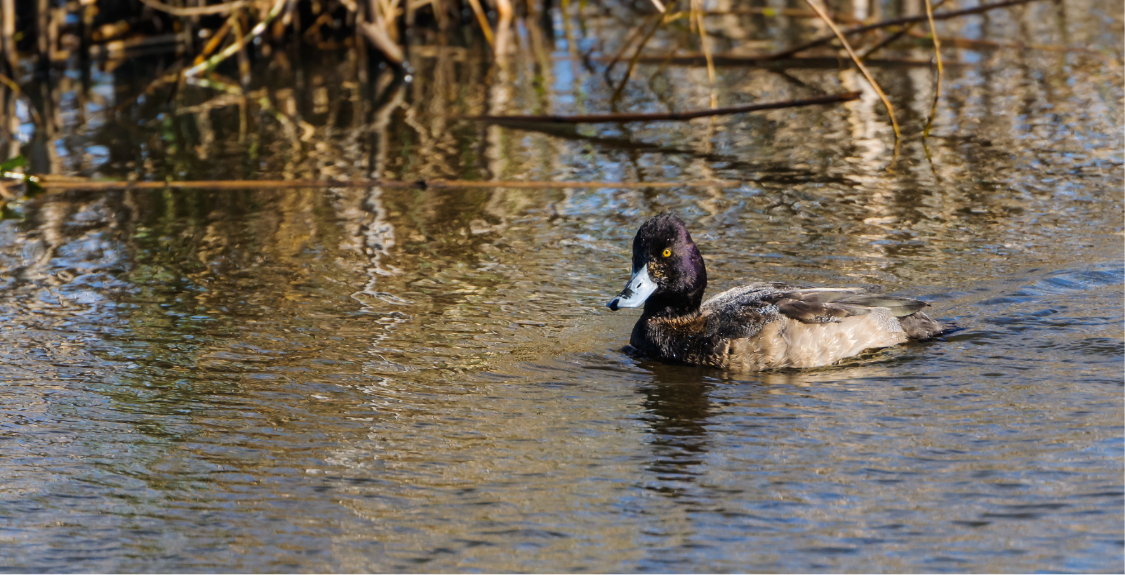AFM NEWS
Building Better Waterfowl Habitat

By Jennifer Hunt (Content Writer), Shane Fuller (Wildlife Biologist), and Clifton Ryland (Regional Technical Forester)
Managing private lands for waterfowl is a rewarding experience that demonstrates stewardship of natural resources. Not only does this sustain waterfowl populations for recreation and ecological benefits, but it is often in the landowner’s best interest to proactively manage habitats. There is a myriad of factors that contribute to a quality waterfowl property, including scale, disturbance, and the quality and quantity of foraging opportunities.
In the context of waterfowl habitat, scale refers to the spatial size of the area being considered for management, conservation, or research. This is critical because waterfowl use habitats at multiple levels, from small foraging sites to large migratory flyaways. The availability of water during migration is essential and can come in the form of wetlands, marshes, or ponds. These create opportunities for waterfowl to forage or nest. Consider dabbling ducks (Mallards, American Wigeons, Gadwalls, etc.), a group of ducks that “dabble” the water’s surface for food rather than diving. The ideal foraging depth for dabbling ducks is between three to 18 inches, and food at deeper depths is unavailable for consumption. Managers can leverage scale by making resources available; for instance, adding skim water on a portion of the property when water temperatures are above 70 degrees generates an invertebrate response. Habitat choices during the fall migration correlate with energy expenditures in relation to foraging opportunities and are made based on economies of scale.
Although ducks are resilient, landowners should do their best to minimize disturbances to the site to limit the number of times waterfowl have to move on a daily basis. Since flight requires such a significant expenditure of energy, minimizing disturbances allows waterfowl to rest. Landowners can regulate hunting pressure, times, and areas, as well as lay out access roads and ditches to ensure the property is an appropriate place of peace and rest for waterfowl. Large hunt clubs can designate a portion of the property as a sanctuary to minimize human disturbances. This affords a property to “hold” ducks, meaning the conditions are attractive enough to attract and maintain waterfowl on the property. Recent telemetry studies (used to track animal behavior, movements, and habitat over time) have shown the efficacy of these practices.
Finally, the quality and quantity of foraging opportunities is the last step to creating a waterfowl property that attracts and retains ducks. Forest management plans can be written with waterfowl habitat as a specific objective, and agricultural plantings can also be utilized to add diversity.
- Agricultural plantings: Japanese millet, corn, rice, and brown top millet are top choices in the Southeast, as they provide a lot of seeds for waterfowl. Each has benefits and detriments; for instance, rice produces seed prolifically, but it can also be consumed by blackbirds before waterfowl have a chance to feast. Milo and corn are high in energy and thus excellent agricultural crops for waterfowl, but corn is intolerant to drought and heat.
- Forest land: Forests and wooded sites provide loafing and roosting opportunities as well as cover from inclement weather. Red oaks and other quality mast-producing trees can be interspersed throughout the stand to provide food sources for waterfowl and other wildlife. It’s essential to create small openings into forest wetland habitats so waterfowl species have easy access. Talk to your AFM Wildlife Biologist and land manager to help you determine which agricultural plantings and silvicultural activities are best suited for your site.
Private landowners can establish quality waterfowl habitats that increase reproductive potential and sustainable population growth. This meaningful work should be completed under the direction of a professional forester or land manager to ensure habitats are adequately treated and maintained. Reach out to your AFM Wildlife Biologist and Forester to help you utilize scale, eliminate or minimize disturbance, and plant or maintain your site for quality foraging opportunities.
